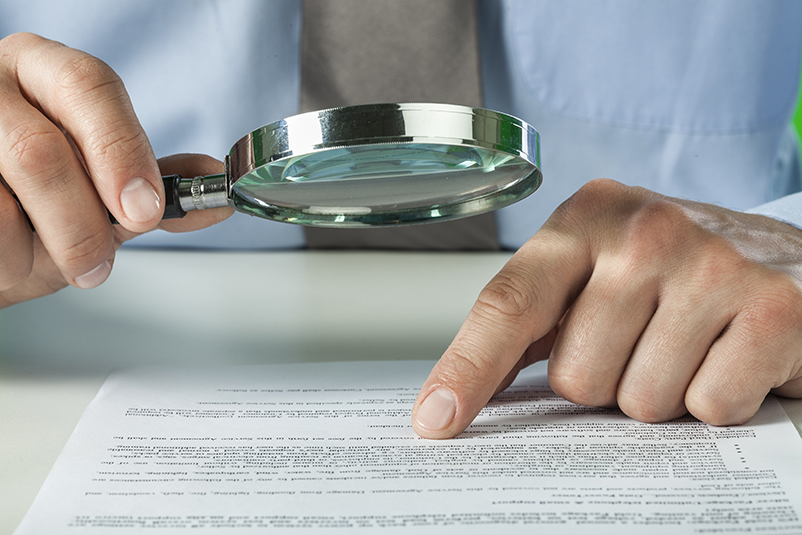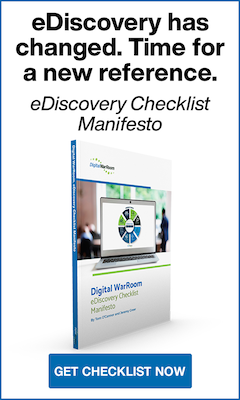Legal document review is an important phase in the litigation process. It's where the parties involved are required to gather, analyze, and produce documents relevant to the case. Traditionally, this has involved paper files, but in today’s digital age, most documents come in electronic form (known as eDiscovery). This shift has made document review a more complex and time-consuming task. In this process, the producing party must comb through collected data to meet legal obligations for document discovery.
However, thanks to modern tools like eDiscovery software, what once was a daunting task can now be managed efficiently. The evolution of legal document review and eDiscovery has brought in automated tools that make the job easier, faster, and more accurate for document review attorneys.
What are email PSTs, and why do they matter?
Email PST files (Personal Storage Table) are widely used in the legal industry for document review purposes. A PST file stores emails locally on your computer, making it an essential tool for attorneys during the discovery phase. These files can be large, especially when they store years’ worth of emails, leading to increased data hosting fees and more labor-intensive document reviews.
In eDiscovery, PST files often contain key emails required in subpoenas, which can be a heavy burden on the review team when the files are massive. A legal team may need to sift through thousands of emails, sometimes spanning years, to find the relevant information.
What is document review in litigation?
Document review in litigation is a vital step for legal teams. After gathering all the necessary data and documents, attorneys must analyze each piece to identify which ones are relevant to the case. This is where document review software becomes a game-changer.
By using these tools, attorneys can filter out irrelevant documents quickly and focus only on the ones that matter. This helps reduce the workload and ensures that the legal team remains focused on the crucial aspects of the case. The goal of this process is to develop a legal strategy based on the discovered evidence.
What is eDiscovery?
eDiscovery, or electronic discovery, refers to the process of collecting, reviewing, and producing digital data for legal purposes. In litigation, eDiscovery allows legal teams to access and manage data electronically, making it more efficient to handle large volumes of information.
The Electronic Discovery Reference Model (EDRM) is the framework that guides this process, helping attorneys identify, collect, and review electronic data in an organized way. eDiscovery tools streamline this process by automating tasks like filtering and sorting documents, which helps save time and reduce errors.
Why do we even review so many documents?
The review of documents in litigation is driven by the Federal Rules of Civil Procedure, specifically Rule 26(b)(1), which allows parties to obtain discovery for any relevant, non-privileged matter. Attorneys request broad categories of documents, such as email communications, to uncover any evidence that could impact the case.
This is why the review process is so extensive—attorneys are tasked with looking at vast amounts of data to ensure they meet legal obligations while adhering to the rules of procedure.
What is eDiscovery document review?
The eDiscovery document review process involves sorting through collected data to find relevant documents and withholding privileged ones. With the help of eDiscovery tools, attorneys can quickly sift through large volumes of documents, applying filters to exclude irrelevant information. The process is iterative, which means reviewing the data multiple times to ensure nothing is overlooked.
By using review tools, legal teams can identify documents that may be vital to the case, ultimately forming the foundation for legal strategies.
Who ends up doing all the work to review documents?
Document review should be overseen at a high level by the attorney, but can often be managed more closely by litigation support professionals and paralegals on the legal team. The role of a document reviewer is to operate eDiscovery software and utilize its sorting, search, filtering, and batching capabilities to help attorneys meet their requirements for document discovery and production.
A more senior paralegal or litigation support professional with experience will likely see their role expand beyond just the review phase to managing document collection as well as processing, organization, production, export, and delivery. This impacts review costs and should be considered in your case budget.
What is a document review job?
There are many important considerations during a review project. Exact workflows vary based on the case at hand and individual preferences, but there are several considerations and goals consistent across most review process projects.
Document review jobs are often temporary contract positions filled by attorneys, paralegals, and litigation support specialists who read and process multiple documents as the review team.
What does it mean to review a document?
When an attorney or paralegal reviews a document, they are looking for relevance and responsiveness. They must determine if a review document is relevant to the case at hand. This definition of relevance is determined and agreed upon by both parties.
To accelerate the search for responsive documents, review attorneys often create keyword lists and use other filtering techniques to narrow down the selection of the review projects.
Relevant documents
Relevant documents vary by the specifics of the case at hand. They can include medical records, insurance policies, internal product evaluations, testing, receipts, records of repair, accounting, and investigations. This should exclude privileged documents.
How to do a document review
When creating and negotiating keyword lists, amongst other criteria, for your review projects, we highly recommend testing your assumptions on real data. Document review tools include a "tagging" or "marking" functionality.
Each document should be assigned one mark, which represents its level of responsiveness. You should also consider that when creating your search terms, you may contend with misspellings, code words, and jargon.
Privilege review
Privileged documents and information may be withheld from production, and eDiscovery tools have specific mechanisms to facilitate meeting legal obligations for declaring privilege on individual documents.
If a document is determined to be privileged, a privilege type mark can be applied to it, and the tool will encourage or require the document reviewer to fill out a corresponding privilege log entry for that file.
Confidentiality - Protective Order agreement, redactions, etc.
Federal rules of evidence 502(d) allow parties to enter into a clawback agreement by which either side can return privileged documents that were produced inadvertently. Reviewing for confidentiality is paramount when dealing with valuable client data.
“Attorney's eyes only” is a common designation that can be applied alongside a produce type mark to signal confidentiality to the other side. Specific allowable protective order designations should be agreed upon prior to beginning the review phase.
Redactions are also available to reviewers in an eDiscovery tool to cover confidential information, such as Social Security numbers or other private content.
Protecting privacy during discovery
Privileged information is information that is protected by a confidential relationship recognized by law, such as attorney-client, doctor-patient, etc.
In some cases, it is possible to demand the documents be returned and stricken from the record, but, as attorneys often say, “you can’t unring a bell.” That’s why it’s so important to protect privilege during a review, so you don’t accidentally hand over (inadvertently disclose) information to opposing counsel that they don’t otherwise have a legal right to.
What is a document review tool?
Review capabilities can be expanded or limited by legal document review software. For example, instead of reviewing documents one at a time, filtering and keyword searching will speed up the process of finding the most relevant documents.
Ultimately, document review tools allow users to get to the heart of their matter and document review project more quickly.
There are a variety of document review tools available to help attorneys with the task of reviewing large quantities of documents. Some common features of these tools include:
-The ability to search for specific terms or concepts
-The ability to tag or flag documents for further review
-The ability to create summary reports
-The ability to export data in a variety of formats
The content we review: components of files
ESI can review almost every aspect of our document review process if required. Unlike paper, where you have the content only visible by reading the page before, ESSI has several components.
The component can include information that is readily available, like text and images. The components can also include information we don't know or are hidden from us, like the metadata of spreadsheets or the fragments of data on hard drives.
Creating a document review plan
To evaluate a process and determine its effectiveness, many organizations create review guides. The guides should explain the facts of the case, the searches used, and the codes used when identifying responsive, nonresponsive, privileged, and other determinations.
First, you will determine how information was collected, whether by a client, vendor, or responding party. That’s how you will find out how information is formatted and organized before you attempt to review it.
Next, you will document your search and review procedure. Make sure to provide details of any software used in the review, how you allocate sets of data, and any use of predictive coding or TAR methods.
Develop a quality control program and stick to it! Then you can create consistent coding or tagging sets that fit the needs of the specific case.
Coding screens typically contain data fields for responsive or non-responsive, privileged, confidentiality levels, and “key” documents. Use these to evaluate the search capabilities of the review database.
As you plan, make sure you determine the final output formats and production for outside parties. Additionally, make sure that a privilege log can be generated for documents coded as privileged to ensure confidential and redacted documents are specially recognized and properly handled.
How do document review tools help make the document review process more efficient?
Document review attorneys have their work cut out for them. Document review tools help make the document review process more efficient. They save time and effort by automating repetitive tasks, such as filtering and sorting documents.
In addition, they can help identify relevant documents more quickly by using keyword search and other features. Ultimately, document review tools help attorneys get to the heart of their matter and document review projects more quickly.
Getting Started with Digital WarRoom
Make your document review process simpler and accelerate document reviews using Just, Speedy, and Inexpensive eDiscovery software. Schedule a demo with Digital WarRoom today using our calendar link in the header or contact us at info@digitalwarroom.com.
Frequently Asked Questions
- What is the role of a document reviewer in litigation?
Document reviewers are responsible for evaluating whether documents are relevant to a case. They use eDiscovery software to tag and organize documents based on their relevance.
- How does eDiscovery save time in the document review process?
eDiscovery tools automate many manual tasks, such as searching for specific keywords, sorting documents, and identifying duplicates, allowing legal teams to work more efficiently.
- What are some common tools used in eDiscovery?
Popular eDiscovery tools include Relativity, Logikcull, and Everlaw. These platforms provide features like keyword search, document tagging, and production management to streamline the review process.
- How do attorneys determine the relevance of a document?
Attorneys determine relevance by evaluating whether the document can impact the case. They use criteria like keywords, context, and whether the document supports or contradicts the case’s arguments.
- Why is it important to protect privileged information during document review?
Privileged information, such as attorney-client communications, must be safeguarded to prevent inadvertent disclosure. This is why eDiscovery tools include mechanisms to mark and track privileged documents.
-1.png?width=400&height=164&name=DWRLogoClassic%20-%20Copy%20(2)-1.png)









Comment On This Article